Leaf Dinnerware
A University in Thailand has spent the past year developing a new type of waterproof bowl made of leaves. The women behind this leaf dinnerware felt called to design a replacement for Styrofoam when they saw large amounts of trash at a Temple in their country.
The bowls they make are certainly beautiful, and woven tightly enough that they will not leak. The women used starch to create a glossy look to the dining ware, and once used, these dishes will decompose naturally.
Their research indicates that the leaves from Kwao (bastard teak), Sak (teak) and Sai (banyan) trees worked the best for these plates and bowls.
A Traditional Bowl
While the women have applied for a patent, the idea of leaf-based dining ware is not new. In fact, this method has been used for generations in India and Nepal.
This product may not be new to the indigenous people of India and Nepal, but it is certainly a fresh idea for those of us in the West who are accustomed to massive amounts of trash-waste coming with our convenience foods.
It is about time that through innovation and tradition we find a way to replace our heavy dependence on Styrofoam and plastic for both fast food and convenience food. I wonder if they could make cups that could withstand a drink beyond a meal?
If there is to be food trash and careless litter, wouldn’t you rather it look like this?
If you have ever used a leaf plate or bowl, please tell your story here! We would love photos of your experiences as well.
Update: People have been asking where to buy them, and we have not found this exact model, but we did find palm leaf and bamboo dining ware on Amazon. Enjoy!
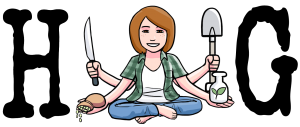
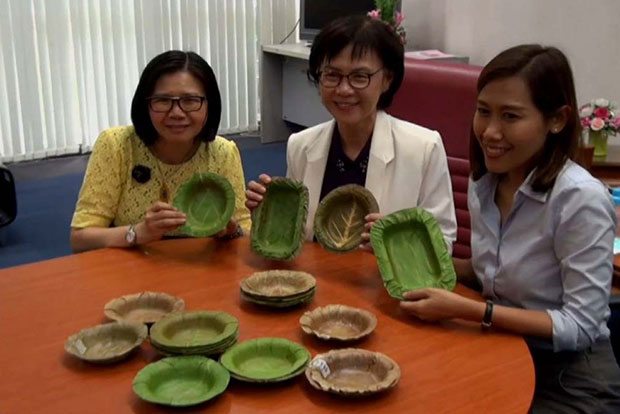
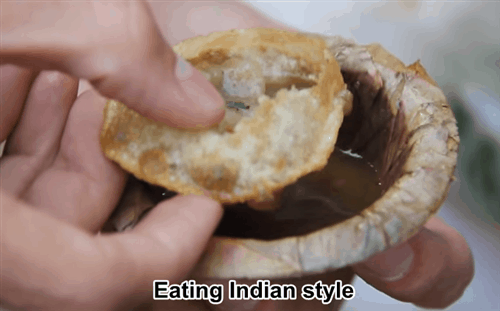
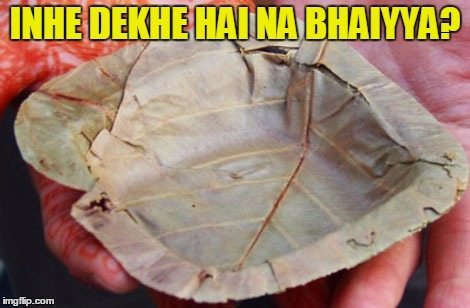
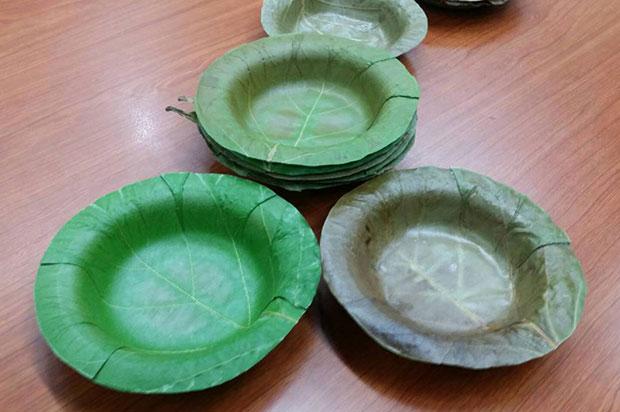
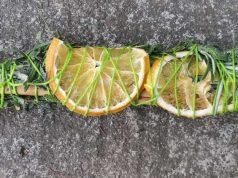
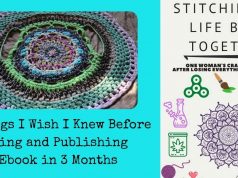
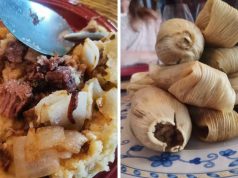
Our traditional food named ‘binulugu/ tinamba’ ( rice ball) wrapped with some kind of broad leaves. The leaves thst usually used are Tarap leaves and ‘wonihan’ leaves. Both of this leaves have some distinct pleasant odor which enhance the uniqueness of that traditional food.-from Dusun people of Borneo-
Please send me complete detail for using leafs of banyan trees for making bowl and other.
Where can you buy these in Thailand?
Where can you get them?
I love this idea – wish this came with instructions so the reader could make their own. I know I’d love to do something like this! Of course, a warning would need to be issued. The leaves of some “food” plants are poisonous
So true! And so is Styrofoam and plastic!
These women have spent their time, energy, and skills to develop this product…… They should earn from their project….
Wonder what a person could do with experimenting with edible leaves in their our ecosystem.
Why would they not earn from it?
Wish this article would include instructions for the reader to make their own organic bowls. I would love to try this concept
I will look this up and do a new post!
Hello Cat,
Thanks for sharing the idea of recyclable plates. In India we have been using this for centuries. Can you give the details on how to commercial produce plates and bowls as there are huge tracts of jungle in India where tribals live under very stressful conditions. Maybe me and friends can tap the resources for the cyclic betterment of our environment and tribals.
Thanks.
I used palm leaf bowls/plates for my wedding in the mountains, its said to decompose within 60 days or could be used as compost. We truly need to get away from plastic and Styrofoam desperately..
Where did you get them? Or, did you make them…?
ABSOLUTELY. I have for years asked for foil to be placed on Styrofoam when I order food out – if they don’t have something biodegradable(?) that is. We need to start refusing the Styrofoam all
together. My daughter’s company supplies biodegradables to businesses around New England so
other companies MUST HAVE other choices for us if we insist on it.
I bet we could use kudzu leaves here in the south for this!!
Is manufacturing this product going to result in trees being destroyed. ?
I’m wondering what impact this could possibly have too. Doubt it’s much but just wondering.
Thats my query too…. Wih the amount of disposables humans use, the trees will go extinct..
was wondering the same
Yes, I had the same thought. It sounds perfect except for the potential destruction of many more trees.
It could lead to more trees being planted, same way as when tea leaves became an international drink.
Thank you for sharing this info. But like the others, I want know how to get them or make them. Please keep updates coming. Again, thank you. L. JUDITH CARROLL ljudithcarroll@hotmail.com
We must always remember that nothing decomposes in a garbage dump below about 6 inches . An archeologist found 1950’s green grass and readable newsprint in one. Compost this, don’t dump, if you can.
I have bowls made from coconut shells that I bought whilst at Hugging Ammas Ashram in Kerala. They also had cups with handles and spoons and other kitchen utensils. Still using them two years later!
I live in the south Pacific and there’s a lot of breadfruit. Those leaves are almost leathery when they are drying, and I’m wondering how it would be possible to somehow put them around a mold and make dinnerware. Also, here people wrap food in pawpaw (papaya) leaves, which keeps it fresh longer. So maybe pawpaw leaves and breadfruit leaves?? How will I find out if they’re toxic and can’t be used? And exactly how might I do that? Any ideas?
Yes, dried leaf bowls and plates are used in India. I’ve eaten from them and love it. Even better is eating from a fresh banana leaf as we do in South India and Sri Lanka. They can even be wiped clean and reused at least once. Banana leaves are also used to package food. So much better than cling film and plastic.
Thank you Cat Bleish for this post. As said, we Nepali using these leaf plates & bowls from long time. Here in Nepal, most these leaf are of Sal Trees (Shorea Robusta). Last year I was selected for this project in MIC Nepal Pre-Accelerator program.
I am searching for such technology, can you please provide me contact name and address of those University Researchers ?
My project can be seen at http://www.laptey.com and http://www.facebook.com/laptey
I used dinner plates made from bamboo and dessert and salad bowls made from Palm leaves for my wedding. They didn’t cost much more than nice paper plates and they worked perfectly with our wedding theme, were very sturdy and looked beautiful on the tables. I got them from a website called Webstaurant. Definitely worth checking out. They all kinds of earth friendly disposable tableware. I’m surprised this article made it sound like this is a new concept.
Hello Becky. If the world doesn’t know something like this existed for centuries, and now it is for all to use, then the element of surprise would definitely be there. The flip side is now some of us are making a conscious effort to save our environment before it is too late. Thank you for your efforts.
[…] read more original article Homestead guru […]
In my country many time we use bread bowl. For all you can eat with spoon.
http://images.24ur.com/media/images/640×338/Nov2011/60814119.jpg
Globally, cabbage grows abundantly. I have used cabbage leaves from round cabbages, from suichoy, an Asian cabbage that is long and slender, very sturdy. Pumpkins, squash, watermelons all make fine receptacles for food. In fact some can be eaten along with the main food, or later composted. We have all contributed to a “disposable” society – its future will do us in by disposing of our natural resources. Our natural world is shrinking at an alarming rate. It’s really up to us to wake up, begin thinking out of the box for the future of our children and grandchildren. We… Read more »
[…] early May, The Homestead Guru’s Cat Bleish published an article on leaf dinnerware that naturally decomposes, that is being developed at Thailand’s Naresuan […]
They will need a lot of these in France since the ban of plastic and Styrofoam cups plates and eating utensils
Congratulations and best of luck! may your idea be followed everywhere!
Hear hear!
In Kerala we eat off banana leaves and breakfast to take away is wrapped in a banana leaf and that is all that is discarded after eating.
These cups are called ‘ thonnai’ in Tamil and is used in temples to distribute prasadam. the food tastes good and is also healthy. Better than the wax Coated paper cups and bowls and the plastic ones. It is made from lotus leaves from the olden days.
I grew up in Central America, and street vendors used square pieces of fresh banana leaf as plates. Tamales, in many countries, are wrapped in banana leaf, and then steamed. (In other countries, they are made in dried corn husks.) Banana leaves are HUGE; you could easily cut 10-20 plates from a single leaf. I’ve seen banana leaf wrappers here in the US, in the Goya/Spanish foods frozen section.
This is so fantastic!! You women are a true inspiration and thank you for your desication to our beautiful Earth 💖 Blessings & gratitude
Perhaps carnauba or candallila wax could be an option to make bowls or cups water proof? They are natural waxes and very hard.
Perhaps if the exterior of the dinnerware were coated in it?
Lovely to see that this ancient tableware might make it global! I don’t have pictures but these plates and bowls were pretty much standard, along with clay “glasses” or ” kulhars” at all communal feasts. They are not just 100 percent biodegrable but also super hygienic. In our area in India, “dhak” leaves are used, in South India and Bengal, orissa an even simpler version is used as plates, fresh and washed banana leaves. Banana leaves are totally water resistant so no leakage!!
good post